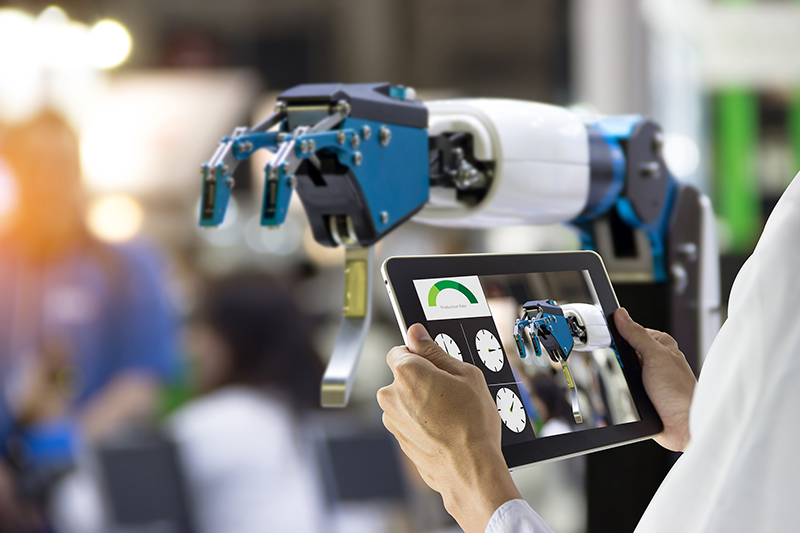Click here to get this post in PDF
Industry 4.0 brings innovation in manufacturing using artificial intelligence (AI) and machine learning (ML), along with real-time data collection and analysis. These processes are enabled by the Internet of Things (IoT) and cloud computing.
Smart factories use sophisticated sensors, embedded software, and robotics to collect and analyze data for improved decision-making. The ML system uses information from manufacturing operations, enterprise resource planning (ERP), supply chains, customer relationship management (CRM), and other enterprise systems to create valuable insights. The overall process embraces automation, enables predictive maintenance, and creates optimal process efficiency with greater responsiveness to customers’ needs.
In this article, we will explore the role of machine learning in the development of Industry 4.0 in more detail.
Intelligent Quality Control
Analysis of process-related data is combined with ML to identify defects and improve quality control. Machine-vison technology provides the information for ML defect detection. It automates large-scale product inspections with high levels of accuracy and is especially effective for identifying complex defects indiscernible by the human eye.
With the help of computer vision and machine learning algorithms, the system learns to recognize anomalies on the surface of products and identify inconsistencies in sizes, shapes and other parameters. This configuration allows the real-time analysis of visual inspections with better results than human inspectors can provide.
ML tests the manufactured products in a touchless fashion using IoT sensors. Algorithms search for patterns in the real-time data feed that match a defective unit (on which the ML algorithm was previously trained). This process enables the rapid identification of defective products and allows prompt reaction from quality control specialists.
Better Predictive Maintenance
ML has tremendous utility in predictive maintenance. It enables manufacturers to adjust, correct, and maintain machinery properly before a costly failure happens.
Predictive maintenance uses IoT sensors to collect data about a machine’s operating conditions and running status. Data collection may include lubrication levels, power loads, humidity, temperature, operational noise level, and more. An ML algorithm then analyzes patterns in the data collected over time to reasonably predict when a machine needs maintenance. Such a system understands the applicable standards for the operating parameters to be able to identify an anomaly. ML dynamically adjusts to new data in real time and can detect and alert human staff of serious issues.
Improved Supply Chain
An improved supply chain is another example of the use cases of machine learning in manufacturing. A supply chain is now a nondeterministic workflow, where the sequence needs to adapt and change to optimize the process. Automation is necessary to increase supply chain management’s effectiveness by enhancing its visibility.
Artificial Intelligence and Machine learning for supply chain management automate repetitive tasks and optimize the process by forecasting demand across product segments and geographies, adapting to volatility effects such as demand spikes, and more. AI-powered solutions are trained on data from materials procurement, logistics, and transportation systems to predict the demand/supply requirements. With all business needs in mind, this technology can improve procurement, order processing, inventory management, transportation logistics, and end-user delivery methods and timing.
How to Start Implementing ML in Your Factory
The main components of a successful machine learning implementation are high-quality data collection and engaging an expert team of AI engineers to build an effective system.
ML depends on the quality and the amount of data to be analyzed. Best practices include using open-source datasets to train the machine learning algorithms initially. The next step is to create proprietary value by using internally-generated datasets for ML training. This stage of the process may include converting historical data to a usable ML format.
However, you need experts who can work with data science and machine learning to get the most out of your data. They will create algorithms to help you achieve your business goals most cost-effectively and productively. Partnering with experienced ML engineers will allow you to move a business forward, making it part of the progressive Industry 4.0 space.
You may also like:
Retab raises $3.5M and launches most powerful document AI platform on the market
How To Get Started With Machine Learning For Your Business?
Image source: Shutterstock.com

